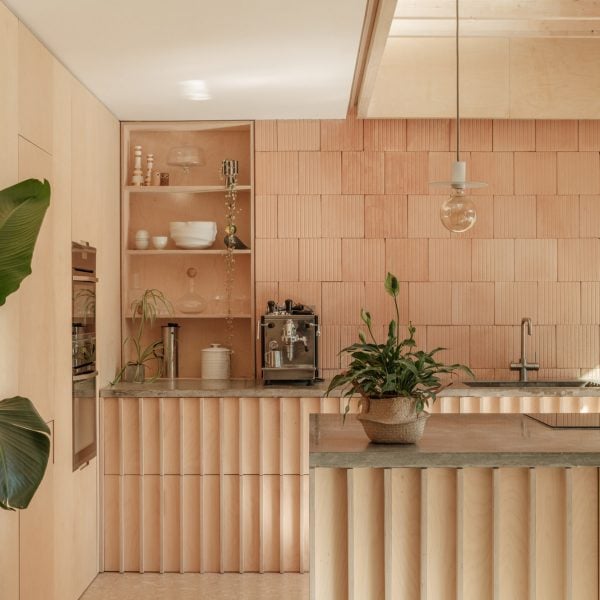[ad_1]
Architect Michael Henriksen used exposed clay-block walls, timber ceilings and cork flooring to bring a sense of “warmth and texture” to the renovation and extension of his own family home in St Albans, England.
Henriksen, who is a director at London studio Coffey Architects, undertook the redesign of the 1920s, three-bedroom pebble-dashed house as a “nights and weekends passion project”.
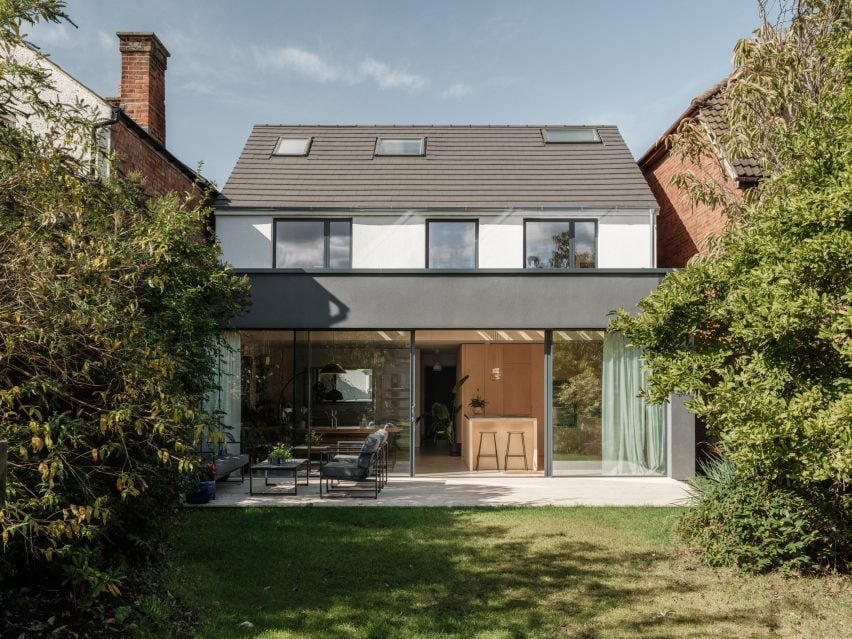
The renovation added two additional bedrooms and opened-up the ground floor to house a living, kitchen and dining space with an extension made using clay blocks, in what Henriksen claims is the first time they have been used and exposed in the UK.
As well as simplifying the construction process due to their inherent insulation properties, these blocks were left exposed to form a textured feature wall in the open-plan kitchen and living area.
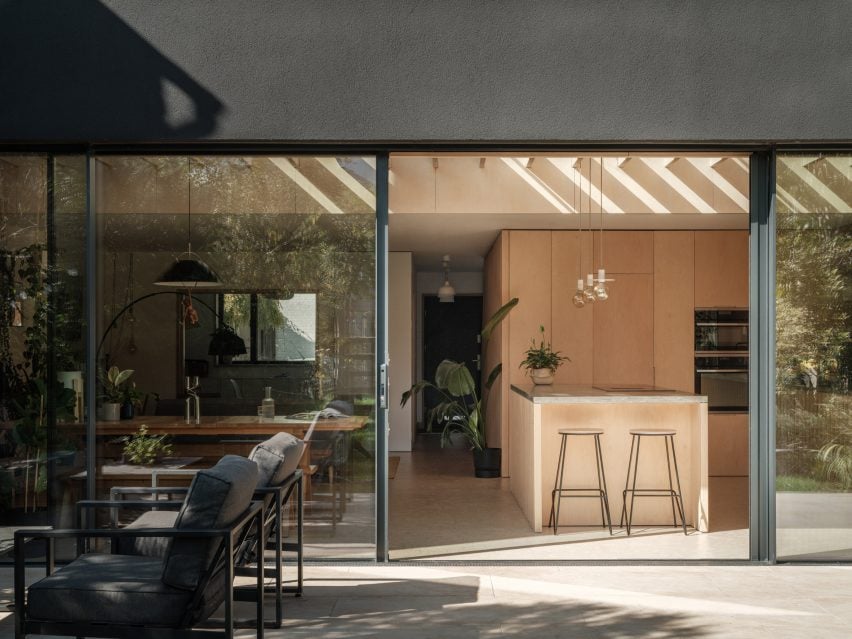
“I had previously seen clay blocks used in projects back in Denmark where I’m from, as well as in some exceptional projects from Spain,” Henriksen told Dezeen.
“Initially, I considered using typical cavity walls, but I realised that monolithic clay blocks could simplify the construction process and potentially reduce labour costs, as these blocks form the entire wall structure, requiring only a thin external render,” he added.
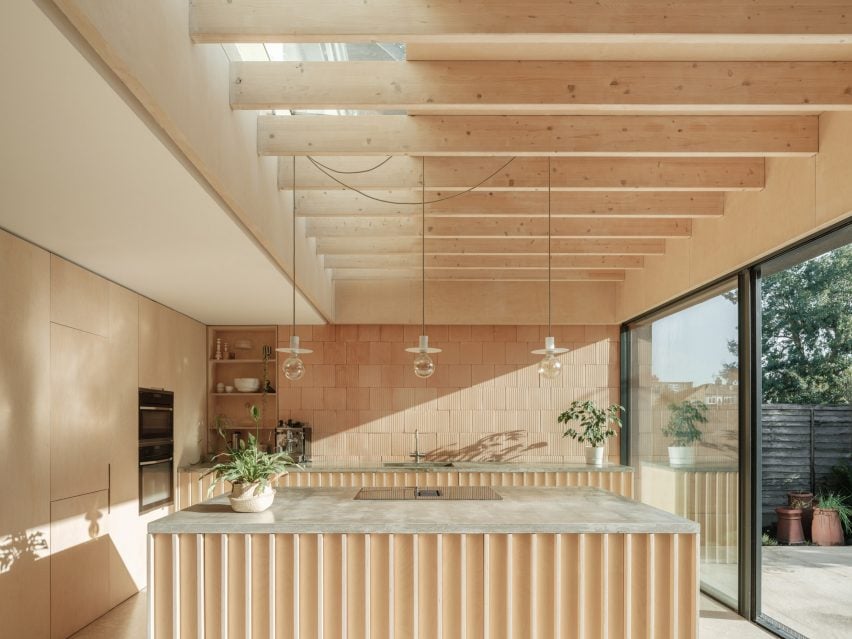
Overlooking the garden through full-height windows and a sliding glass door, the exposed clay block walls of the extension are complemented by cork floor and a ceiling of exposed timber, with a series of skylights that illuminate smooth concrete and ribbed timber countertops.
This open space is visible as soon as the home is entered, with a new axis framed by the corridor and staircase, where a timber balustrade extends the full length and width of the wall to conceal doors to utility and bathroom spaces.
“A ceiling canopy of birch plywood and glued-laminated timber beams, paired with cork flooring tiles, brings warmth and texture to the open plan living area,” said Henriksen.
“The added ceiling height enhances the area’s spacious, open feel, often leaving a striking first impression on friends as they enter the house,” he continued.
“We used simple butt joints at the joinery corners rather than more complex options like mitre joints, which helped keep the process both efficient and satisfying.”
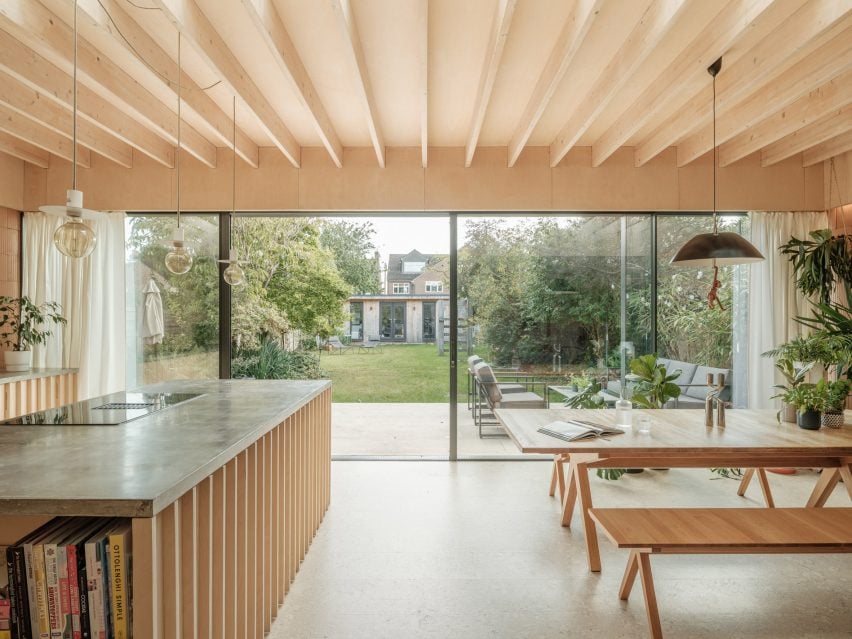
On the first floor, a side extension above the home’s garage created space for two additional bedrooms, while a loft conversion added a further guest bedroom and reading den that can be accessed from the children’s bunk beds.
While more pared-back in their material palette, these bedroom spaces continue the use of exposed plywood in beds and “crisp” window reveals.
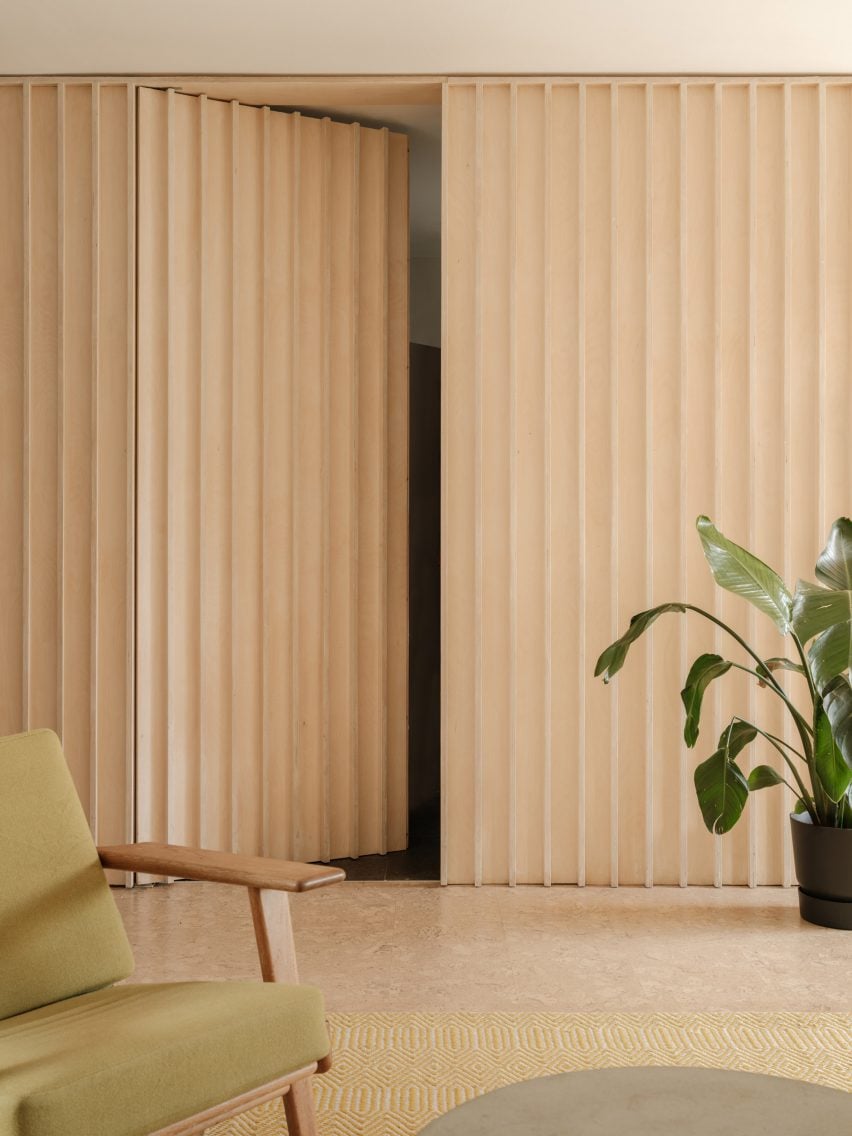
With London studio Coffey Architects, Henriksen has worked on projects including a home in Dorset that was designed to mimic a cluster of timber-clad agricultural barns.
The photography is by James Retief.
[ad_2]
Source link

